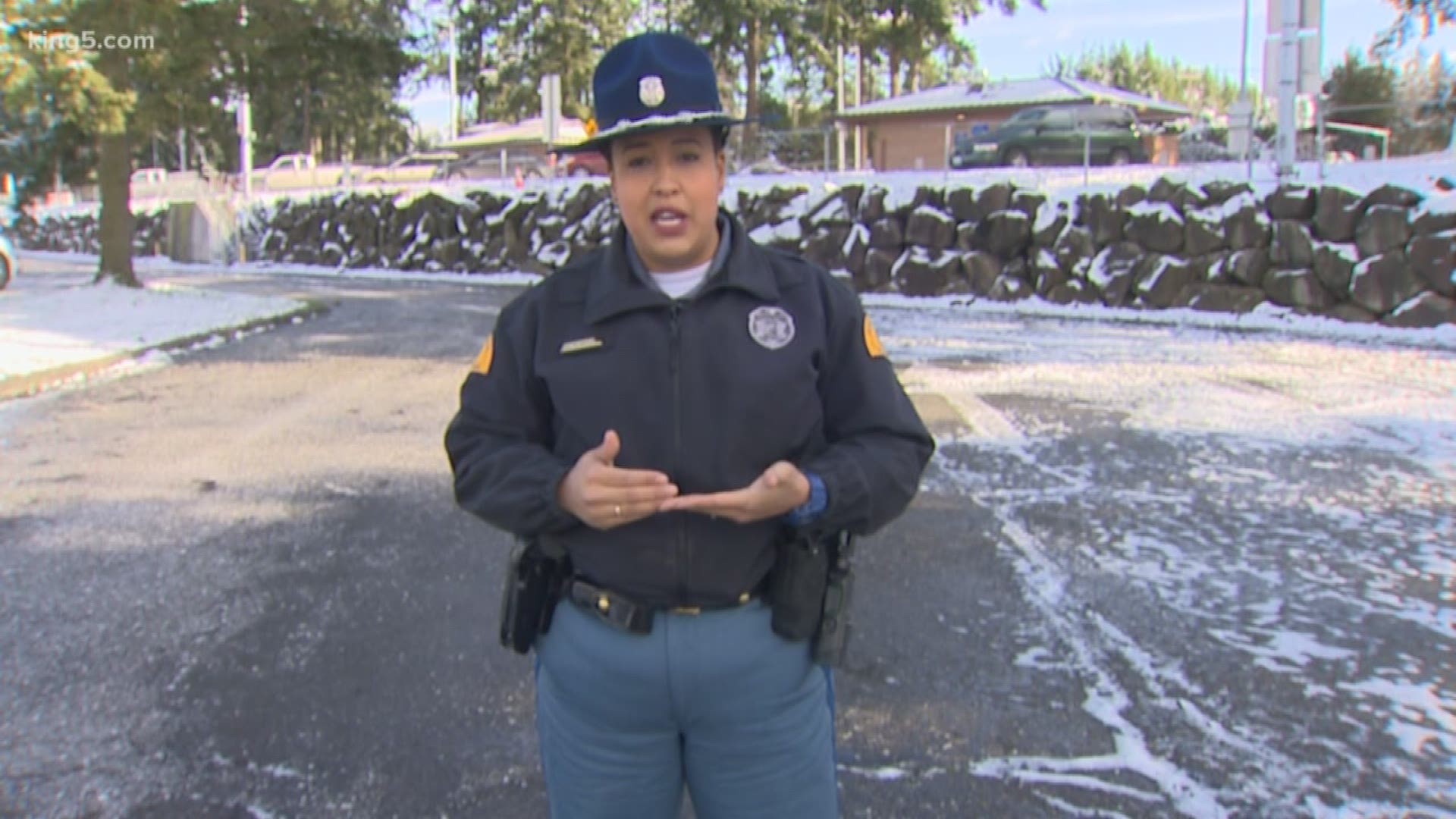We've heard it our entire lives: Washingtonians can't drive in the snow.
One factor that is out of our control is likely contributing to that stigma.
When snow falls in places like the Midwest, it is usually dry snow that forms a layer with a decent amount of friction as it compacts, according to KING 5 Meteorologist Rich Marriott.
That's a stark contrast from what tends to happen in the Pacific Northwest.
For example, when snow initially fell during 2019's winter storm it was barely cold enough to snow. But most places dropped from around 40 degrees to near freezing in about an hour.
"So the initial snow fell and melted into a layer of liquid water on the road that immediately began to freeze into ice on the roads when temperatures fell..." Marriott said. "Once it was frozen, the rest of the snow fell at cold temperatures overnight and fell on the ice layer."
That means by the time people hit the road for the morning commute, they were driving on snow that was sitting on top of a layer of ice.
What compounds the issue is when it warms up enough to melt the snow and at least some of the ice off the roads, but it doesn't stay warm enough to dry the roads completely. This creates a cycle of icy roads that can last for days as temperatures plunge back into the teens and 20s overnight.
"All of this leads to roads and sidewalks that are much more slippery than you would see in the Midwest or East Coast," Marriott says. "Except when they get freezing rain and then they can't drive either."

